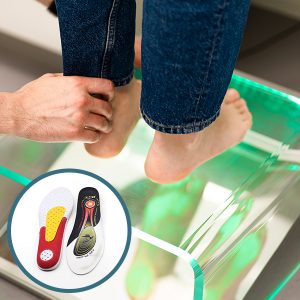
When choosing insoles for children, there are a few factors to consider. Here are some guidelines to help you:
1. Size: Start by selecting the correct size of insoles based on your child’s shoe size. Insoles come in various sizes, so choose one that corresponds to your child’s shoe size or trim them if necessary to fit snugly inside the shoes.
2. Arch Support: Pay attention to your child’s arch type. Some children have low arches (flat feet), while others may have high arches. Look for insoles that provide appropriate arch support corresponding to your child’s foot structure. This helps maintain proper alignment and reduces the risk of foot conditions like overpronation or supination.
3. Cushioning and Comfort: Opt for insoles with sufficient cushioning to provide comfort during activities. Children tend to be more active, so it’s crucial to choose insoles that offer shock absorption and reduce pressure on the feet. Consider materials like memory foam or gel inserts for enhanced comfort.
4. Breathability and Moisture-Wicking: Look for insoles made from breathable materials that allow air circulation and prevent excessive sweat build-up. Moisture-wicking properties help keep the feet dry and reduce the likelihood of odors or fungal infections.
5. Durability: Children can be quite rough on their shoes and insoles. Select insoles that are durable and can withstand regular use and wear. Sturdy construction and quality materials will ensure longevity.
6. Consult a Professional: If your child has specific foot concerns, it’s advisable to consult a pediatrician or a podiatrist for expert advice. They can evaluate your child’s foot structure and recommend specialized insoles, if needed.
Remember, every child is unique, and their foot needs may vary. It’s essential to consider individual preferences and requirements when choosing insoles for children.
